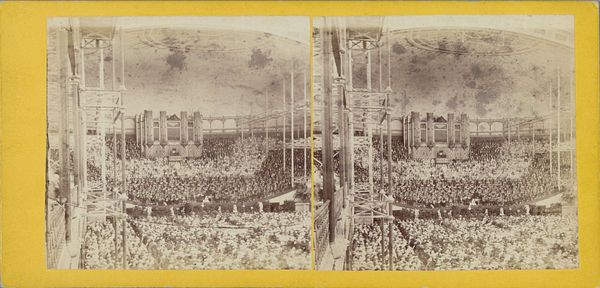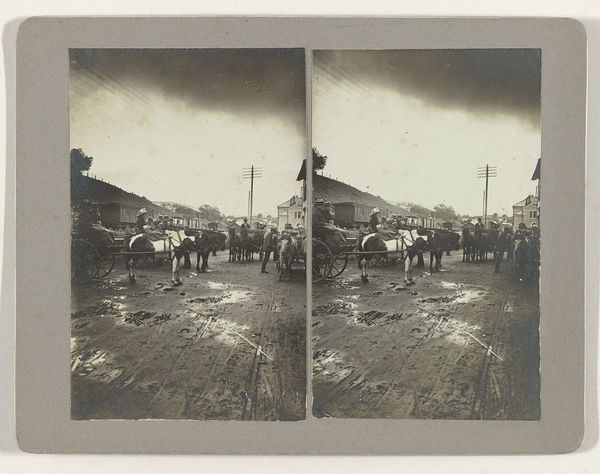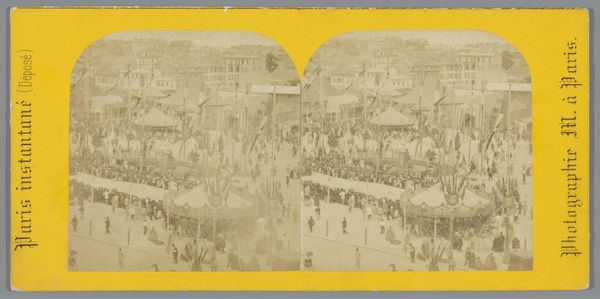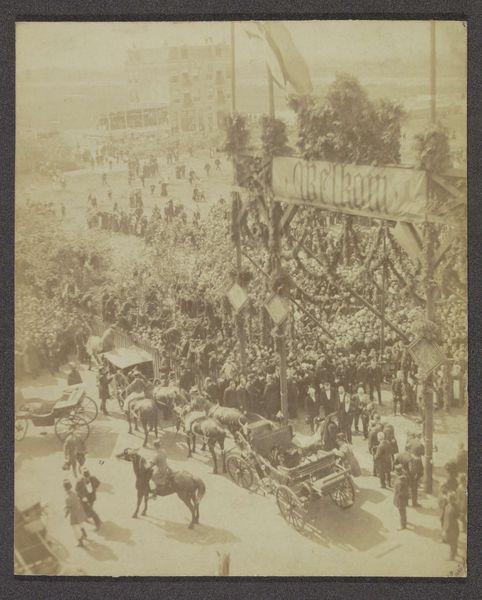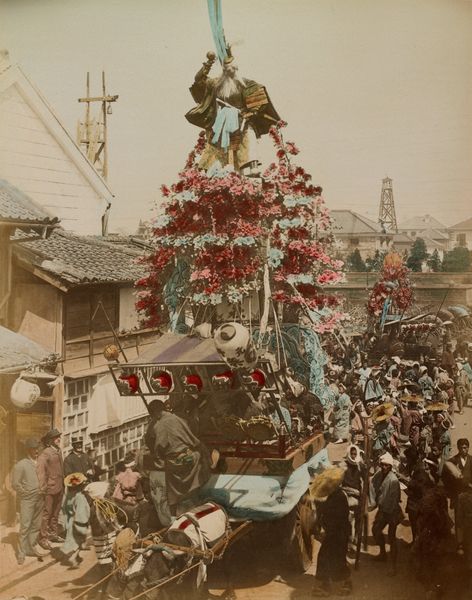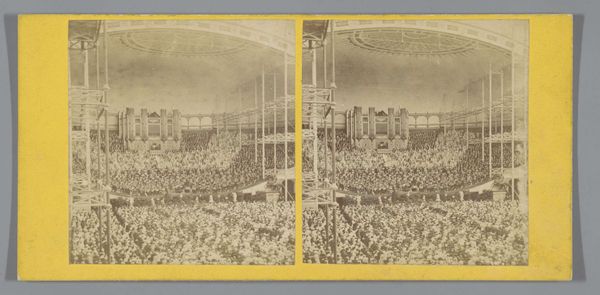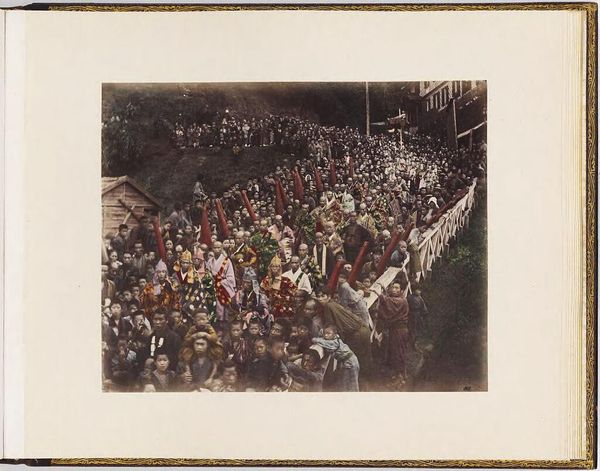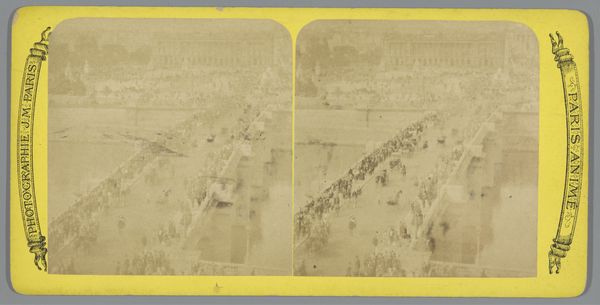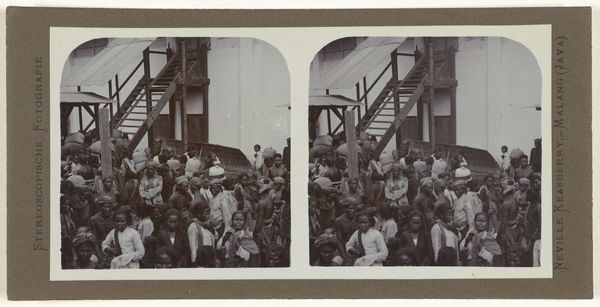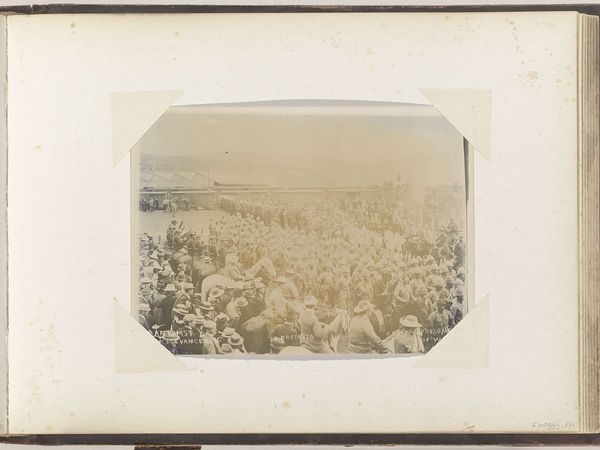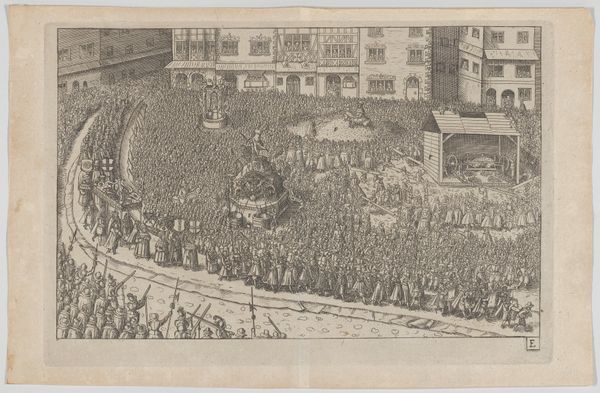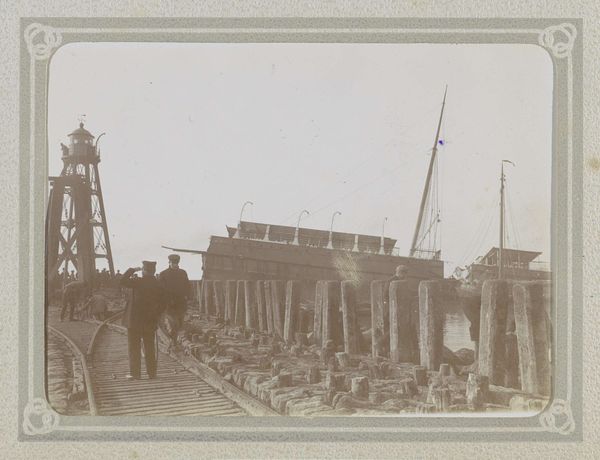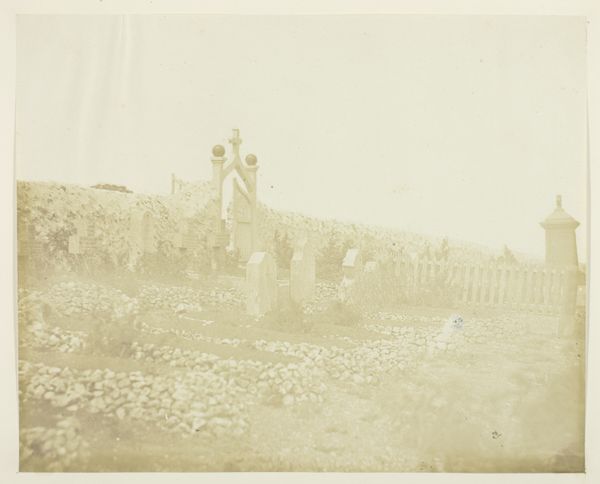
photography, albumen-print
#
asian-art
#
photography
#
orientalism
#
cityscape
#
genre-painting
#
albumen-print
Dimensions: height 89 mm, width 178 mm
Copyright: Rijks Museum: Open Domain
Curator: At first glance, this photograph captures a somewhat precarious celebration—the scale of which is immediately compelling! Editor: I agree, it feels simultaneously festive and fraught. It's an albumen print, taken sometime between 1900 and 1907 by T. Enami. Its official title translates to 'New Year Celebration with Firemen in Japan,' so the theatrics appear to be ritualized. Curator: That’s an interesting starting point. T. Enami was a significant figure who catered to Western tourists with images presenting Japan through a distinct Orientalist lens. I’m drawn to how it encapsulates ideas of labour and performative masculinity in that era. Look at how precarious those poses are at the top of those wooden masts! Editor: The sheer physicality involved speaks to a complex relationship with risk, and the materials at play. Those bamboo poles...you can almost feel their texture! It reminds me of traditional craftsmanship, intertwined with civic duty and spectacle. These firefighters are literally elevating themselves—and their roles. Curator: Precisely! Their elevation is a spectacle deeply rooted in tradition, yet also imbued with gendered expectations, creating a performance that reinforced existing power structures. Notice how all the action plays out in a carefully arranged scene against the backdrop of early 20th-century Japan. Editor: And those dark coats en masse. The visual contrast between their solid uniform mass at the bottom and the fragile bodies perched atop those bamboo spars heightens the sense of potential collapse, materially, metaphorically, politically… The photo, through its method of capturing the image itself becomes evidence of work as ritual. Curator: It also makes me think of visibility and representation. Who were these images really for? Were they meant to reflect Japanese society, or to shape the perception of it for Western consumers? Editor: Excellent point! The intersection of labor, tradition, and visual culture invites such critical inquiry. These photographs provided a window but through which kind of frame, with what intended consumer in mind? It truly shifts how we might consider photographic truth. Curator: Definitely! And understanding these power dynamics is key to contextualizing not only the imagery but also how history remembers--or forgets--the ordinary people participating in these complex performances. Editor: Well, that has certainly expanded my understanding and I appreciate you showing me this image through this additional framework, so very useful for our listeners to bring along.
Comments
No comments
Be the first to comment and join the conversation on the ultimate creative platform.
